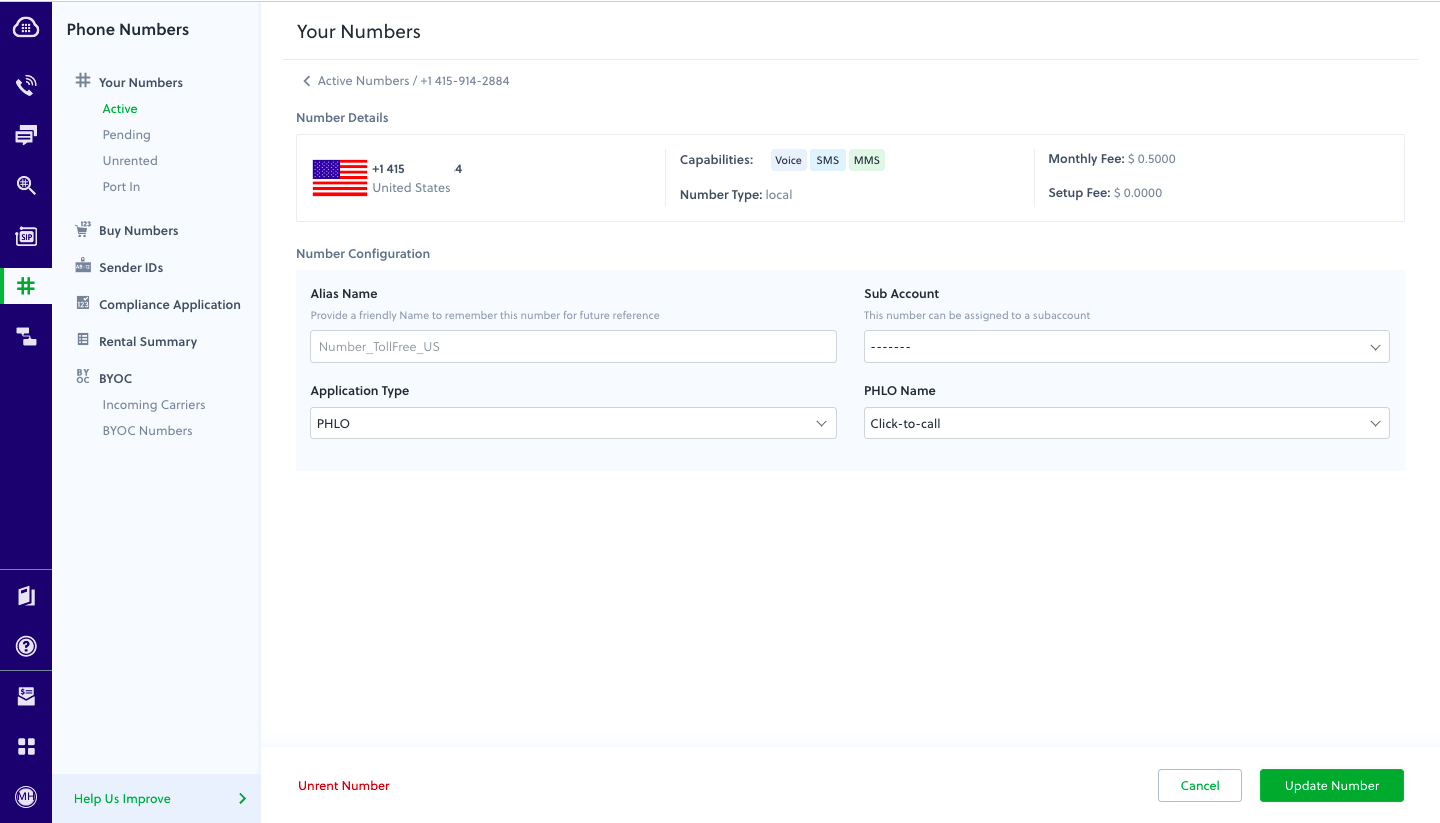Click-to-call lets your website users engage with your support and sales teams on your website. Sometimes users might want to speak to someone via their handset but initiate the call online, or they might want to talk to someone directly from the website. You can implement either use case using Plivo’s Browser SDK.
To get started, you need a Plivo account — sign up with your work email address if you don’t have one already. You must have a voice-enabled Plivo phone number to receive incoming calls; you can rent numbers from the Numbers page of the Plivo console, or by using the Numbers API. Click to call requires JavaScript; we recommend using Node.js. If this is your first time triggering a PHLO with Node.js, follow our instructions to set up a Node.js development environment and a web server and safely expose that server to the internet.
Build the PHLO
To create a PHLO, visit the PHLO page of the Plivo console. If this is your first PHLO, the PHLO page will be empty.
- Click Create New PHLO.
- In the Choose your use case pop-up, click Build my own. The PHLO canvas will appear with the Start node. The Start node is the starting point of any PHLO. It lets you trigger a PHLO to start upon one of three actions: incoming SMS message, incoming call, or API request.
- Click the Start node to open the Configuration tab, and then enter the information to retrieve from the HTTP Request payload — in this case key names are destinationNumber and phoneMeNumber. The values will remain blank as we will receive them when the request is made by the browser.
- Validate the configuration by clicking Validate. Do the same for each node as you go along.
- From the list of components on the left side, drag and drop the Initiate Call component onto the canvas. This adds an Initiate Call node onto the canvas. When a component is placed on the canvas it becomes a node.
- Draw a line to connect the Start node’s API Request trigger state to the Initiate Call node.
- In the Configuration tab of the Initiate Call node, give the node a name. To enter values for the From and To fields, enter two curly brackets to view all available variables, and choose the appropriate ones. The values for the numbers will be retrieved from the HTTP Request payload you defined in the Start node. Here From is 14159142884 and To is {{Start.http.params.phoneMeNumber}}.
- From the list of components on the left side, drag and drop the Call Forward component onto the canvas. Draw a line to connect the Answered trigger state of the Initiate Call node with the Call Forward node.
- Configure the Call Forward node to initiate call forward to another user. To enter values for the From and To fields, enter two curly brackets to view all available variables, and choose the appropriate ones. The values for the numbers will be retrieved from the HTTP Request payload you defined in the Start node. Here From is {{Start.http.params.phoneMeNumber}} and To is {{Start.http.params.destinationNumber}}.
- After you complete and validate the node configurations, give the PHLO a name by clicking in the upper left, then click Save.
- From the list of components on the left side, drag and drop the Call Forward component onto the canvas.
- Draw a line to connect the Start node’s Incoming call trigger state to the Call Forward node.
- In the Configuration tab of the Call Forward node, give the node a name. To enter values for the From and To fields, enter two curly brackets to view all available variables, and choose the appropriate ones. The values for the numbers will be retrieved from the HTTP Request payload you defined in the Start node. Here From is {{Start.http.params.header1}}. and To is {{Start.http.params.to}}.
- After you complete and validate the node configurations, give the PHLO a name by clicking in the upper left, then click Save.
Your complete PHLO should look like this:

Copy our demo application
- You need a little code to trigger the PHLO, but we’ve written it for you. Clone the repository from GitHub.

















